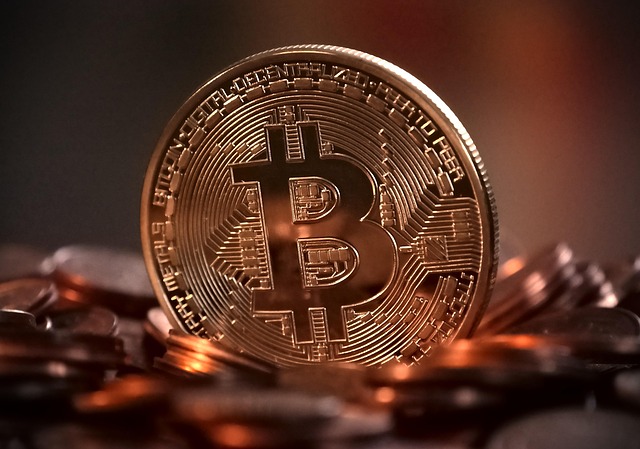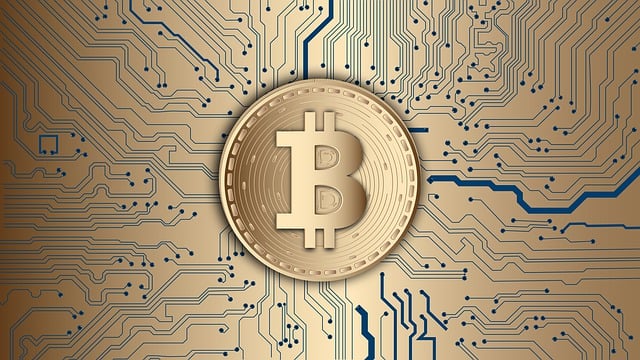Is Bitcoin Blockchain Slow Today in 2025? An In-Depth Analysis
Author: Jameson Richman Expert
Published On: 2025-09-11
Prepared by Jameson Richman and our team of experts with over a decade of experience in cryptocurrency and digital asset analysis. Learn more about us.
The question of whether the Bitcoin blockchain is experiencing slow transaction speeds in 2025 has taken on renewed significance as the network’s adoption accelerates and its technological landscape evolves. Bitcoin, as the pioneering cryptocurrency, was originally crafted with a focus on security, decentralization, and censorship resistance. These core priorities, however, came at the expense of scalability, leading to inherent limitations in transaction throughput. As Bitcoin's ecosystem expands—with increased retail adoption, institutional participation, decentralized finance (DeFi), and tokenization—understanding the current network performance, the factors influencing it, and the latest technological innovations is crucial for users, developers, investors, and stakeholders aiming to optimize transaction efficiency in 2025.

Current Network Performance Metrics in 2025
In 2025, Bitcoin continues to uphold its fundamental protocol parameters, notably the fixed 10-minute block interval—a core security feature that ensures decentralization and resistance to certain attack vectors. Each block is capped at approximately 1 megabyte, which restricts the number of transactions included per block to roughly 2,000–3,000, translating to a theoretical maximum throughput of around 3-7 transactions per second. Despite these constants, real-world confirmation times often experience variability. Data from blockchain explorers such as Blockchain.com reveal that during periods of network congestion, average confirmation times can extend well beyond the average 10-minute block interval—sometimes reaching 20-30 minutes or even higher. This phenomenon is primarily driven by congestion in the mempool—the collection of unconfirmed transactions waiting to be included in the next block—caused by surges in transaction volume.
During these congestion periods, users and service providers respond by attaching higher transaction fees to incentivize miners, creating a dynamic fee market. This fee prioritization significantly impacts transaction confirmation times and costs, often leading to delays and elevated fees for smaller users. Notably, these delays can vary significantly based on network demand, macroeconomic events, market volatility, and user behavior, making transaction confirmation times unpredictable at times.
Factors Influencing Transaction Speed in 2025
Multiple interconnected factors shape Bitcoin’s transaction speed and network performance in 2025, revealing the intrinsic scalability challenges and operational complexities:
- Network Congestion and Adoption Trends: The rapid increase in Bitcoin’s adoption across various sectors—medium of exchange, institutional custody, DeFi protocols, and tokenization—has led to unprecedented transaction volumes. During bull runs or macroeconomic shocks, these surges cause significant congestion, resulting in delays and higher fees. For example, institutional players conducting large transfers or DeFi platforms executing complex smart contracts can generate spikes that strain the network's capacity.
- Fixed Block Size and Block Interval Constraints: Bitcoin’s protocol imposes a 1 MB maximum block size, limiting throughput to roughly 3-7 transactions per second. This hard cap cannot be increased without consensus changes or protocol upgrades, meaning the network remains inherently limited in scale. During demand surges, this constraint results in transaction backlogs, increased confirmation times, and higher fees, creating a bottleneck in transaction processing.
- Market-Driven Fee Dynamics and Miner Incentivization: Transaction prioritization in the mempool is driven by fee bidding—higher fees generally lead to faster confirmation. During congestion, low-fee transactions may be delayed or dropped from the mempool altogether, leading to variability and unpredictability in transaction confirmation times. Miners tend to favor transactions with higher fees, which can disadvantage average users, especially during peak demand periods.
- Protocol Upgrades and Layer-2 Deployment: The activation of protocol improvements like Taproot in late 2021 has enhanced privacy, efficiency, and scripting capabilities, but scalability still heavily depends on secondary layers and off-chain solutions. Widespread adoption of these layers is vital for alleviating main chain congestion and enabling higher throughput.
Role of Layer-2 Solutions and Scalability Enhancements
A central pillar of Bitcoin’s scalability strategy in 2025 is the proliferation of Layer-2 solutions, primarily the Lightning Network, which enables off-chain transactions that settle periodically on the main chain. The Lightning Network establishes payment channels between participants—allowing an unlimited number of transactions to occur instantly and with minimal fees—making it well-suited for microtransactions, retail payments, cross-border remittances, and everyday use cases.
By 2025, the Lightning Network has experienced exponential growth in capacity, node count, and channel diversity. This expansion has enabled Bitcoin to handle a volume of daily transactions comparable to traditional digital payment systems, effectively reducing reliance on the main chain for routine transfers. Moreover, protocol improvements like Taproot have enhanced privacy and transaction efficiency through Schnorr signatures, which facilitate signature aggregation, thereby reducing transaction sizes and computational load during validation.
The synergy between off-chain solutions and on-chain upgrades means that users can enjoy near-instant, low-cost transactions, while the main chain remains focused on settlement security and decentralization. Together, these layers significantly mitigate the impact of congestion on user experience.

Technological Innovations Addressing Scalability
Continued innovation in Bitcoin’s cryptography and network protocols is pivotal in overcoming existing scalability limitations. Key technological advancements include:
- Schnorr Signatures: Introduced with Taproot activation, Schnorr signatures enable signature aggregation, allowing multiple signatures within a transaction to be combined into a single, compact signature. This reduction in transaction size translates into increased block capacity, faster validation, and lower transaction fees—especially during periods of high network load.
- Advanced Mempool Management and Fee Estimation Algorithms: Modern wallets and node software employ real-time fee estimation techniques, analyzing network conditions—such as mempool size, recent block confirmation times, and fee trends—to suggest optimal fees. These tools assist users in avoiding overpaying or experiencing delays, thus improving overall throughput and reliability.
- Cross-Chain and Sidechain Technologies: Platforms like RSK, Liquid, and others enable smart contracts, digital asset issuance, and additional scalability layers off the main chain. These sidechains offload complex transactions and operations, reducing load on Bitcoin’s primary network while maintaining security and interoperability.
- Enhanced Block Propagation Protocols: Innovations such as Compact Block Relay, Graphene, and Graphene+ improve network synchronization by reducing block propagation times, thus minimizing orphaned blocks and confirming transactions more swiftly during high demand.
User Strategies to Minimize Transaction Delays
Given the variability in transaction confirmation times, savvy Bitcoin users employ several practical strategies to optimize their experience:
- Real-Time Network Monitoring: Tools like Mempool.space supply live data on mempool size, fee estimates, and network congestion, enabling users to time their transactions during periods of lower demand.
- Dynamic Fee Adjustment: Modern wallets automatically suggest fees based on current network conditions, allowing users to balance speed and cost effectively.
- Timing Transacting During Off-Peak Hours: Executing transactions during late-night or early morning hours—when network demand tends to be lower—can lead to quicker confirmations and reduced fees.
- Leveraging Layer-2 Solutions: For small, frequent transactions, the Lightning Network offers near-instant confirmation with minimal fees, ideal for everyday microtransactions, gaming, tipping, and point-of-sale use.
Impact of Market Dynamics and Technological Trends in 2025
The scalability landscape in 2025 is shaped by both market trends and technological advancements. Institutional adoption continues to fuel infrastructure development, including Layer-2 scaling solutions, sidechains, and interoperability protocols, fostering an expanded ecosystem for smart contracts, DeFi, and cross-chain asset transfers. As these innovations gain traction, overall network traffic increases, demanding further scalability solutions.
Simultaneously, macroeconomic factors—such as regulatory changes, market volatility, and global economic conditions—can induce transient congestion episodes, notably during market panics or surges. Nonetheless, ongoing protocol upgrades, innovative off-chain technologies, and community-driven development efforts aim to address these challenges, improving network efficiency and user experience. This dynamic environment fosters continuous evolution towards a more scalable and user-friendly Bitcoin ecosystem.

Conclusion: Is Bitcoin Slow in 2025?
In conclusion, whether Bitcoin feels slow in 2025 largely depends on contextual factors—network demand, technological adoption, and user behavior. While the core protocol maintains its security and decentralization guarantees, periods of intense activity can still generate delays and higher fees. However, these challenges are increasingly mitigated by technological advancements such as the Lightning Network, protocol upgrades like Taproot, Schnorr signatures, and other scalability solutions.
For active users who stay informed about network conditions, leverage modern wallet features, and utilize off-chain solutions, Bitcoin offers a vastly improved transaction experience—approaching the speed and cost-effectiveness of traditional digital payment systems. The future trajectory points toward further innovations, increased infrastructure, and broader adoption, which collectively promise to reduce latency, increase throughput, and enhance scalability—ensuring Bitcoin remains a robust, efficient, and user-centric network in 2025 and beyond.